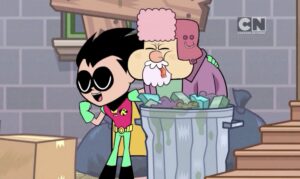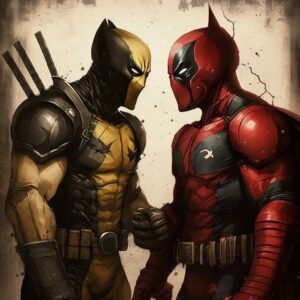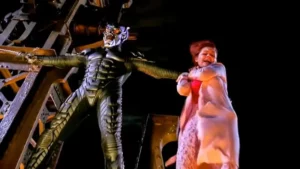objectives
Demonstrate an understanding of the prisoner’s dilemma.
Explain why the dominant strategy of heroes is to fight.
time needed
10-15 minutes.
materials
The ability to show the video Avengers Fight!
Optional: An Iron Man mask and a Captain America shield
Two bags of marshmallows
A broom for cleanup
The payoff matrix: Hero PD matrix.
overview
Teaching the prisoner’s dilemma can be a lot of fun. However, most students have no real experience being a prisoner. Neither do they have experience in deciding whether their firm should advertise or not. As a result, teaching the prisoner’s dilemma may seem like a study in something that will never happen to them. To put the prisoner’s dilemma in a more familiar context however, instructors can turn to superheroes.
One of the odder occurrences in the superhero world is the prevalence of hero fights. While fights can be a ruse to confuse a villain, they can also be legitimate battles between former allies. To name just a few of the epic hero battles: Superman and Batman fight, Wonder Woman and Superman fight, Deadpool and Wolverine downright hate each other, and of course there is the famous Marvel Civil War, where Captain America and Iron Man each lead a squad against the other.
But why do they fight? These are the good guys after all. What provokes such heated battles of super powered people? Perhaps it is economics.
Game theory helps us explain some behaviors that at first glance seem irrational. Because the tools help us deal with situations in which there are strategic implications, game theory might be able to help us answer the question of why superheroes fight each other. In this exercise, students are presented with payoffs that should lead them into a prisoner’s dilemma, and therefore a “fight”. If it doesn’t, it means that the student is looking beyond what is in their own best interest.
action
Before a formal presentation of prisoner’s dilemma show the video clip Avengers Fight!. This short clip shows the beginning of the large superhero versus superhero fight in the Marvel movie Captain America: Civil War. Once the clip has ended, ask students if they know why heroes fight. You will likely get an explanation about what is happening in the movie. (In the movie, a hero and villain battle led to the destruction of a building and the deaths of a number of civilians in Lagos, Nigeria. You can see the clip here. In response, the governments of the world propose regulating hero activity. Captain America and Iron Man are presented with a choice: accept the regulation or retire. The clip of this is shown here. They disagree on the proper course of action and begin building teams of heroes to fight each other.) But this isn’t what you are looking for. Ask the question again: “These are the good guys. Why can’t the set aside their differences and reach a peaceful solution?” It is probable at this point, no one will have an answer. So it is time for you to provide one.
Ask for two volunteers to play the roles of Captain America and Iron Man. Give each hero a mask (if you choose to use these props) and a copy of the payoff matrix. After giving them 30 seconds or so to study the matrix, ask them whether they want to fight or talk. NOTE: in the payoff matrix, Captain America’s payoffs are in blue and Iron Man’s are in red.
Before you ask for their decision, let your heroes know that if they choose to talk, they will just put their hands up in a position of surrender. If they choose to fight, then they will have to fight, and fighting means using the marshmallows. A choice to fight means they will have the opportunity to throw their marshmallows at the other hero.
Have your in-class heroes each point to their decision on the matrix, but be careful not to let one hero know what the other is doing. Tell the students that you will count down from five. When you hit zero they will either put up their hands or start throwing the marshmallows. Start your count down and see what happens!
discussion
After the action is over, it’s time to discuss why the heroes took the actions the did.
Explain that the scenario is a one shot, simultaneous game. The heroes have to make a choice without knowing what the other will do, and they do not get a chance to respond after the game is over. These are necessary conditions for the prisoner’s dilemma.
Now show the payoff matrix to the entire class. It should be obvious to everyone, that the best joint payoff occurs when the heroes talk it out. If both players decide to talk, they each get 600, and the joint total is 1200. It should also be clear that if both players fight, not only is the individual payoff smaller, each gets 250, but the joint payoff of 500 is also smaller. Ask the class again, “why do they fight”?
At this point, there may be no good response. So, work through what makes fighting the dominant strategy. The payoffs for each hero are higher if they choose to fight, no matter what the other hero chooses.
If both of your heroes chose to fight, you now have an explanation: they were following the dominant strategies based on the payoffs presented to them. If one of the heroes chose to talk, ask them why. The most likely answers are that they ignored the off-diagonal payoffs, they didn’t want to seem uncooperative, or they thought the other hero would try to maximize the payoffs jointly. If they both talk, then you have two heroes who put the interests of others above their own self-interest!





